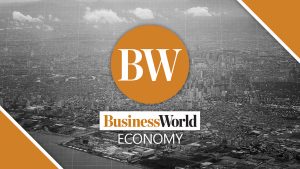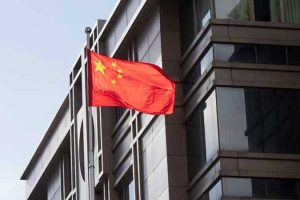BSP sees April inflation at 3.5-4.3%

By Luisa Maria Jacinta C. Jocson, Reporter
HEADLINE INFLATION may have accelerated further in April and possibly breached the 2-4% target, the Bangko Sentral ng Pilipinas (BSP) said.
The central bank’s month-ahead forecast showed that inflation likely settled within the 3.5%-to-4.3% range in April. This is slower than the 6.6% print in April 2023.
The upper end of the forecast would exceed the 2-4% target band for the first time in four months.
On the other hand, the lower end would be slower than the 3.7% inflation recorded in March.
The Philippine Statistics Authority (PSA) is scheduled to release April inflation data on May 7.
“Continued price increases for rice and meat along with higher gasoline prices and the peso depreciation are the primary sources of upward price pressures for the month,” the BSP said in a statement on Tuesday.
Latest data from the Agriculture department showed that local well-milled rice averaged P45-P55 a kilo as of April 29 from P39-P46 a year ago. A kilo of regular milled rice averaged P46-P52 as of April 29 from P34-P42 a year ago.
For the month of April, pump price adjustments stood at a net increase of P2.25 a liter for gasoline, and P0.50 a liter for diesel. Kerosene prices had a net decrease of P0.80 a liter.
Earlier this month, the peso sank to the P57 level for the first time in nearly 17 months or since November 2022.
BSP Governor Eli M. Remolona, Jr. earlier said that the BSP “stands ready to manage any unnecessary movement and excessive volatility.” He also noted the peso’s recent performance has been due to the US dollar’s strength amid the Middle East conflict.
“Meanwhile, lower prices of fish, fruits, vegetables as well as lower electricity rates and the rollback in LPG (liquefied petroleum gas) prices could offset the upside price pressures,” the BSP added.
Manila Electric Co. (Meralco) lowered its overall rate by P0.9879 per kilowatt-hour (kWh) to P10.9518 per kWh in April from P11.9397 in March due to a drop in generation and transmission charges.
Prices of LPG were also lower for the month. Petron Corp. implemented a P1 per kilogram rollback in LPG prices for April.
Security Bank Corp. Chief Economist Robert Dan J. Roces said in an e-mail note that food inflation will continue to be a “significant driver” of overall inflation until July.
“Once the base effect from food inflation starts fading in August, and inflation begins to moderate, the central bank may have more flexibility to adjust its monetary policy stance, depending on the broader economic conditions,” he said.
Food inflation rose to 5.7% in March, its fastest print in four months or since the 5.8% seen in November 2023.
Rizal Commercial Banking Corp. Chief Economist Michael L. Ricafort also noted palay (unmilled rice) prices have increased due to the El Niño dry spell.
Agricultural damage due to the El Niño has reached P4.39 billion as of April 23. Rice losses hit P2.71 billion, accounting for 62% of the total agricultural damage.
In March, rice inflation surged to 24.4%. This was its fastest print since the 24.6% in February 2009.
POLICY PAUSEMeanwhile, the central bank said that it will “continue to monitor developments affecting the outlook for inflation and growth in line with its data-dependent approach to monetary policy decision-making.”
Mr. Roces said that the central bank will likely extend its policy pause at its next meeting.
“Given the elevated inflation readings, we anticipate the BSP to take a proactive approach during their upcoming policy meeting on May 16 where we expect steady rates,” he said.
The Monetary Board stood pat for a fourth straight meeting in April, keeping its benchmark rate at a near 17-year high of 6.5%.
From May 2022 to October, the Monetary Board has hiked borrowing costs by 450 basis points.
The BSP is likely to retain its hawkish tone “to signal their commitment to price stability,” Mr. Roces said.
“With inflation projected to overshoot the target in the subsequent months, the BSP will maintain a tight monetary policy stance to anchor inflation expectations and prevent second-round effects,” he said.
Mr. Roces said the BSP may have more room to loosen policy in the second half as inflationary pressures begin to ease.
Mr. Ricafort also noted some US Federal Reserve officials recently signaled cautiousness before cutting rates, “especially in ensuring that inflation is well anchored towards the Fed’s target of 2%.”
The Fed’s two-day policy meeting ends on Wednesday (May 1).




